At the Fenian camp Thomas Newbigging saw armed sentries on the bridge over Frenchman's Creek and men, "working about, some washing, cooking, carrying rails for breastworks, and cutting down trees...They took three or four horses (from Newbigging), slaughtered eleven lambs and four sheep.
Other soldiers went foraging bringing back poultry and livestock, as well as cured pork flouor, cheeses and crocks of butter. Horses were appropriated when found and generally returned to their owners after the Battle of Ridgeway, regrettably in distressed condition.
Word of the Fenian landing spread quickly. John Cooper, postmaster for the Village of Chippawa decided to inspect the Fenian camp, "to ascertain the true state of affairs."
He left the village on horseback about half past nine on June 1, and found the Fenians outside Fort Erie. The pickets extended to a point three miles north of the village on the River road, and the main body was stationed a mile north of the Lower Ferry at Newbigging's farm.
He approached, came to attention, and was allowed to proceed without challenge. One sentry asked for a match, remarking, "I suppose you are one of us." Cooper saw one sentry ressed in a Federal uniform, others in old CSA (Confederate States Army) frock coats and civilian clothes, and some in gray Confederate uniforms. The latter group told them they belonged to the Louisiana Tigers. Not wishing to tempt fate for too long Cooper returned to Chippewa by a back route.
The Fenian army that camped at Newbigging's farm was made up of discharged Civil war veterans from both sides, generally from three States: Tennessee, Kentucky and Ohio, but augmented with smaller companies from Louisiana and Indiana. They were joined by young recruits and members of the Buffalo area Fenians.
Frenchman's Creek flows south along Newbigging's Farm, and then east to the Niagara River, affording water protection on three sides. The Fenians had built bullet screens from fence rails, positioning them in a northerly direction looking toward Chippawa where they expected the Canadian militia attack to originate.
Other soldiers went foraging bringing back poultry and livestock, as well as cured pork flouor, cheeses and crocks of butter. Horses were appropriated when found and generally returned to their owners after the Battle of Ridgeway, regrettably in distressed condition.
Word of the Fenian landing spread quickly. John Cooper, postmaster for the Village of Chippawa decided to inspect the Fenian camp, "to ascertain the true state of affairs."
He left the village on horseback about half past nine on June 1, and found the Fenians outside Fort Erie. The pickets extended to a point three miles north of the village on the River road, and the main body was stationed a mile north of the Lower Ferry at Newbigging's farm.
He approached, came to attention, and was allowed to proceed without challenge. One sentry asked for a match, remarking, "I suppose you are one of us." Cooper saw one sentry ressed in a Federal uniform, others in old CSA (Confederate States Army) frock coats and civilian clothes, and some in gray Confederate uniforms. The latter group told them they belonged to the Louisiana Tigers. Not wishing to tempt fate for too long Cooper returned to Chippewa by a back route.
The Fenian army that camped at Newbigging's farm was made up of discharged Civil war veterans from both sides, generally from three States: Tennessee, Kentucky and Ohio, but augmented with smaller companies from Louisiana and Indiana. They were joined by young recruits and members of the Buffalo area Fenians.
Frenchman's Creek flows south along Newbigging's Farm, and then east to the Niagara River, affording water protection on three sides. The Fenians had built bullet screens from fence rails, positioning them in a northerly direction looking toward Chippawa where they expected the Canadian militia attack to originate.
Alexander Sommerville, in his period treatment "Narrative of the Fenian Invasion of Canada" describes O'Neill's use of the fences. "Here O'Neill, apprehensive that Colonel Peacocke, or other British commander, would bring up a force by the Niagara River side constructed screens of fence rails across the pasture field, and in the orchard from east to west, to command the approach from the north."
"The split rails of oak," he continues, "averaging about six inches thick, so well known as 'snake fences' in Canada, and 'Virginia rails"on the other side; about fifteen feet long...are piled in a zigzag form, alternately overlying each other at the end, and rising to a height of five, six or seven feet...carried from the side of the Niagara River road, and from other fields."
Tightly placed railed angled at about thirty degrees or less would provide a roof shape. Rifle bullets, hitting it in the direction from which an opposing force might come, accordingly would glance off the rails and over the heads of the sharpshooters placed behind.
Additional rails were piled on the bridge across Frenchman's Creek, ready to be set on fire should the Fenians need to retreat back the way they came.
Colonel O'Neill, it turns out, was correct in his assumption that an attack would come from the north.
*
It was at this time that the first Fenian casualty on Canadian soil occurred.
O'Neill had placed pickets with sentries along the roads in all directions from the camp. One of the sentries posted in the thicket fourteen hundred yards west of the bivouac field was shot during the night by another Fenian sentry who had mistaked him for a Canadian. His comrades stripped him of clothing except for his flannel.
The next day a few Fort Erie farmers went to bury the body, the Fenians having left for Ridgeway. While tracing the course of the bullet through his right arm and right side, they found a hidden pocket in his flannels with $112 in it (about $2500 in current value). The money was turned over to a Customs officer. The dead soldier had a cross suspended on his chest, and image of a similar one with his initials tattooed on his left arm.
The farmers wanted the coroner to hold an inquest, but this request was denied, and the body was buried at the edge of the wood where it was found.
*
At 10p.m. O'Neill gathered his troops and began to march toward Chippawa. He had received intelligence that a large force, said to be about 5,000 strong with artillery, was advancing toward his position in two columns, one from Chippawa, the other from Port Colborne, the latter planning to attack him from the lake side. An astute tactician, O'Neill recognized that there was a distinct possibility he would be caught in a pincer-like manoeuver if he stayed where he was.
At this point he realized as well, much to his regret, that a noteworthy number of Fenians who had crossed earlier in the day, had either re-crossed back to Buffalo, or gone to houses in Fort Erie. His strength was slightly over 500 men, and he had arms for 800. Reluctantly he destroyed 300 stand of arms rather than allow them to fall into Crown Forces hands.
At midnight he suddenly turned left at Black Creek, and began to head toward the Limestone Ridge, north of Ridgeway. His intent was to get between the two columns, meet and defeat the one from Port Colborne, which he perceived to be weaker due to lack of artillery, before the other stronger units with Lieutenant Colonel Peacocke could render aid.
He placed his main body of soldiers within the tree line at Limestone Ridge, a second group at a lower fence line. and a third unit of skirmishers further down the slope. He waited.
*
Long an item of speculation, the exact number of guns and boxes of cartridges at the bottom of Frenchman's Creek remains a mystery to this day. The rifles likely were either Henry 15 round and Spencer 7 round Repeater, Springfield muzzleloaders and Sharp's breach loaders. Here again is Somerville's account of the weapons in the days after the Battle.
"Eighteen of the boxes had been fished up from the bottom of the creek, close by the bridge previous to the 20th of June containing 18,000 cartridges. Possibly more had been sunk elsewhere. The boxes had been punctured by bayonets to admit water to destroy the powder. Each box bore a date '1865', and the name of a United States arsenal, most of them that of 'Bridport'. The arms, rifles and bayonets...had been sunk in the creek. Ninety rifles were taken out and accounted for before 20th of June. How many more were found or still remained in the water was uncertain."
Would-be salvagers and arm chair archaeologists are warned that strict fines attend recovering historical artifacts without a licence. Having said that, a properly conducted search may reveal some very desirable artifacts for the Fort Erie Museum.
"The split rails of oak," he continues, "averaging about six inches thick, so well known as 'snake fences' in Canada, and 'Virginia rails"on the other side; about fifteen feet long...are piled in a zigzag form, alternately overlying each other at the end, and rising to a height of five, six or seven feet...carried from the side of the Niagara River road, and from other fields."
Tightly placed railed angled at about thirty degrees or less would provide a roof shape. Rifle bullets, hitting it in the direction from which an opposing force might come, accordingly would glance off the rails and over the heads of the sharpshooters placed behind.
Additional rails were piled on the bridge across Frenchman's Creek, ready to be set on fire should the Fenians need to retreat back the way they came.
Colonel O'Neill, it turns out, was correct in his assumption that an attack would come from the north.
*
It was at this time that the first Fenian casualty on Canadian soil occurred.
O'Neill had placed pickets with sentries along the roads in all directions from the camp. One of the sentries posted in the thicket fourteen hundred yards west of the bivouac field was shot during the night by another Fenian sentry who had mistaked him for a Canadian. His comrades stripped him of clothing except for his flannel.
The next day a few Fort Erie farmers went to bury the body, the Fenians having left for Ridgeway. While tracing the course of the bullet through his right arm and right side, they found a hidden pocket in his flannels with $112 in it (about $2500 in current value). The money was turned over to a Customs officer. The dead soldier had a cross suspended on his chest, and image of a similar one with his initials tattooed on his left arm.
The farmers wanted the coroner to hold an inquest, but this request was denied, and the body was buried at the edge of the wood where it was found.
*
At 10p.m. O'Neill gathered his troops and began to march toward Chippawa. He had received intelligence that a large force, said to be about 5,000 strong with artillery, was advancing toward his position in two columns, one from Chippawa, the other from Port Colborne, the latter planning to attack him from the lake side. An astute tactician, O'Neill recognized that there was a distinct possibility he would be caught in a pincer-like manoeuver if he stayed where he was.
At this point he realized as well, much to his regret, that a noteworthy number of Fenians who had crossed earlier in the day, had either re-crossed back to Buffalo, or gone to houses in Fort Erie. His strength was slightly over 500 men, and he had arms for 800. Reluctantly he destroyed 300 stand of arms rather than allow them to fall into Crown Forces hands.
At midnight he suddenly turned left at Black Creek, and began to head toward the Limestone Ridge, north of Ridgeway. His intent was to get between the two columns, meet and defeat the one from Port Colborne, which he perceived to be weaker due to lack of artillery, before the other stronger units with Lieutenant Colonel Peacocke could render aid.
He placed his main body of soldiers within the tree line at Limestone Ridge, a second group at a lower fence line. and a third unit of skirmishers further down the slope. He waited.
*
Long an item of speculation, the exact number of guns and boxes of cartridges at the bottom of Frenchman's Creek remains a mystery to this day. The rifles likely were either Henry 15 round and Spencer 7 round Repeater, Springfield muzzleloaders and Sharp's breach loaders. Here again is Somerville's account of the weapons in the days after the Battle.
"Eighteen of the boxes had been fished up from the bottom of the creek, close by the bridge previous to the 20th of June containing 18,000 cartridges. Possibly more had been sunk elsewhere. The boxes had been punctured by bayonets to admit water to destroy the powder. Each box bore a date '1865', and the name of a United States arsenal, most of them that of 'Bridport'. The arms, rifles and bayonets...had been sunk in the creek. Ninety rifles were taken out and accounted for before 20th of June. How many more were found or still remained in the water was uncertain."
Would-be salvagers and arm chair archaeologists are warned that strict fines attend recovering historical artifacts without a licence. Having said that, a properly conducted search may reveal some very desirable artifacts for the Fort Erie Museum.
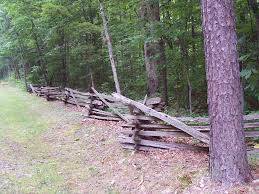

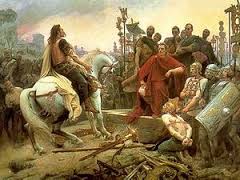
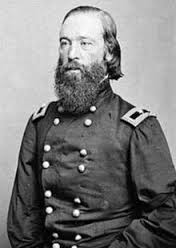
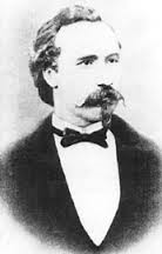
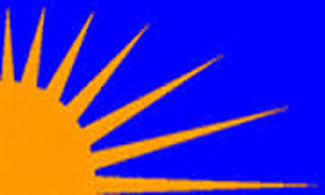
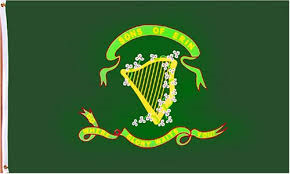
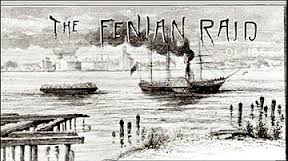
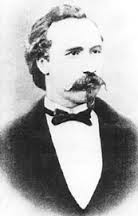
 RSS Feed
RSS Feed